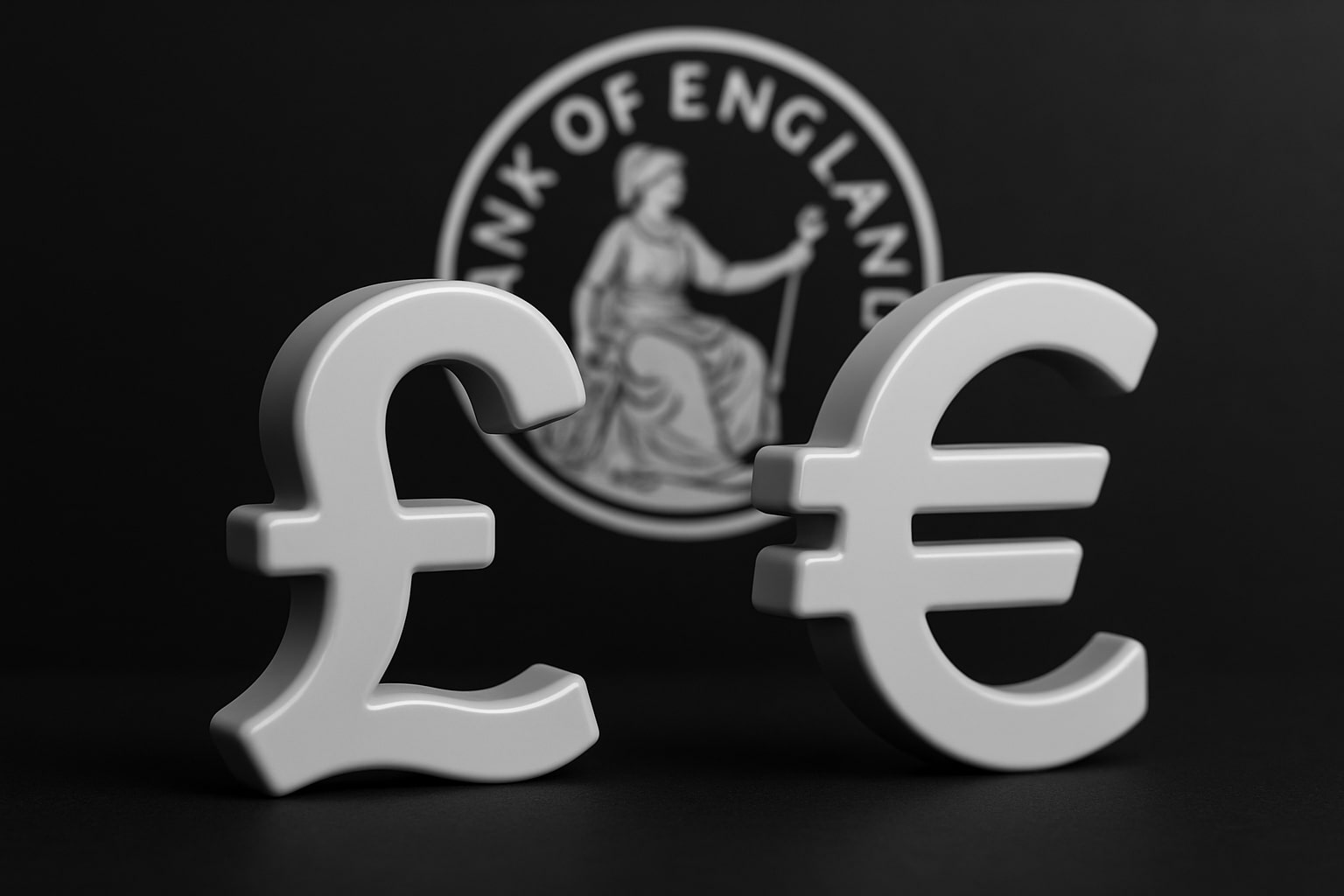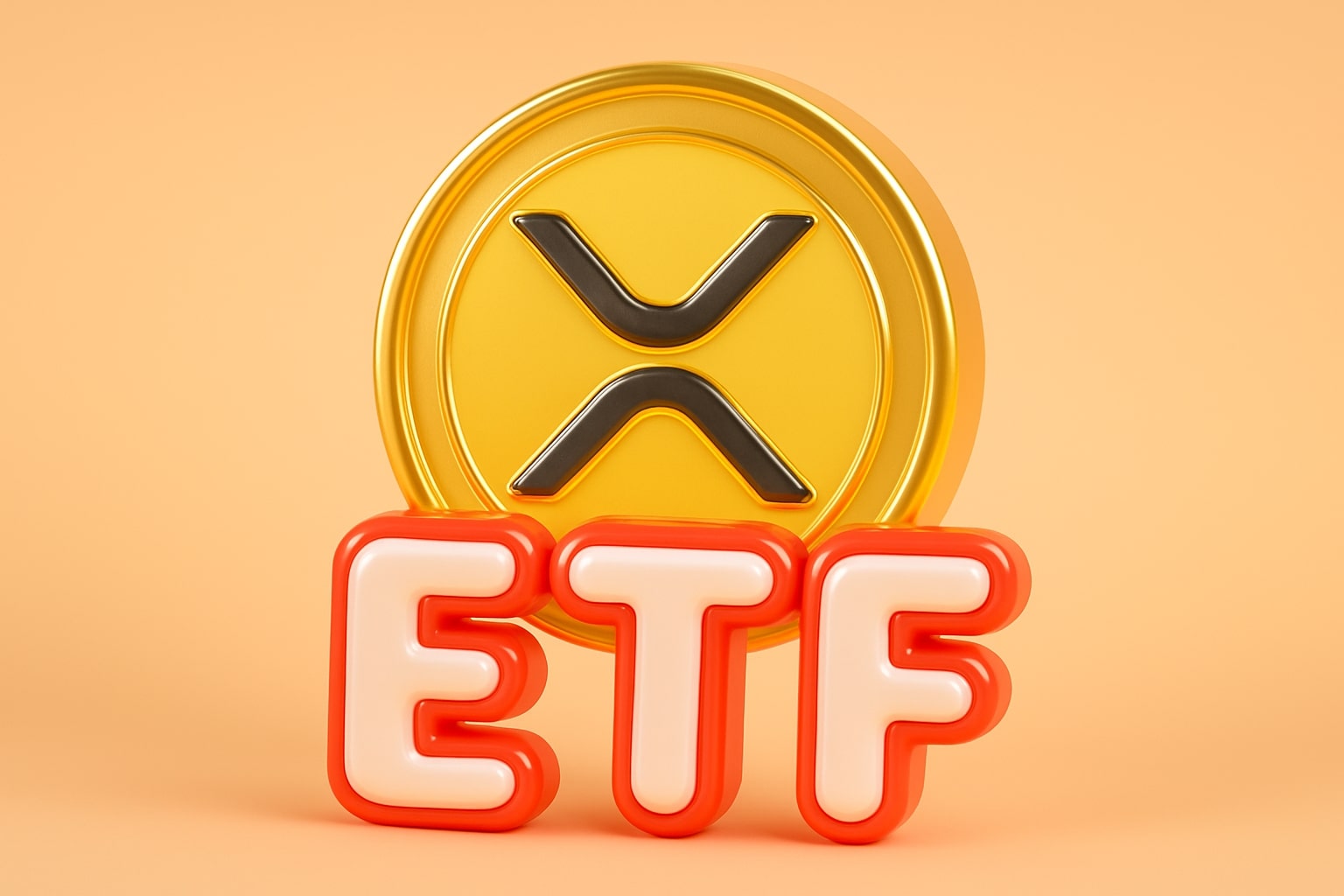
GBP/USD Price Forecast - Pound Sterling Crashes to $1.3296 as Dollar Strength
GBP/USD slumps 0.8% amid DXY’s nine-week high, 3.5% UK deficit target pressure, and BoE’s hawkish tone; technicals signal next downside toward $1.3150 if Reeves’ budget fails to lift sentiment | That's TradingNEWS
GBP/USD Under Pressure as Sterling Falls to $1.3296 — Traders Brace for Reeves’ Fiscal Tightening and Fed’s Hawkish Tone
The British Pound to U.S. Dollar (GBP/USD) pair has fallen sharply, sliding 0.80% to 1.3296, marking its lowest level since early August. The drop mirrors the broad U.S. dollar rally, with the Dollar Index (DXY) surging to 99.51, its highest in nine weeks, as investors rotate toward the greenback amid global risk aversion and renewed fiscal concerns in the United Kingdom. Hedge funds are now increasing net long positions on the dollar into year-end, expecting monetary divergence between the Bank of England (BoE) and the Federal Reserve to deepen.
Fiscal Caution in Focus as Reeves’ Budget Looms Over Sterling
Sterling’s decline is being amplified by domestic concerns ahead of Chancellor Rachel Reeves’ first full budget on November 26. Markets expect a package centered on fiscal tightening, with projections for £18–20 billion in additional taxes and strict spending limits aimed at reducing the UK’s deficit to below 3.5% of GDP by FY2026. Investors fear this approach could choke already-stagnant growth. The UK’s latest PMI Services reading slipped to 50.3, barely above contraction, while manufacturing output shrank 2.2% YoY, the third consecutive monthly drop. Consumer confidence remains fragile, and wage growth—previously the BoE’s inflation driver—has cooled to 6.1% YoY, its weakest since 2023. The pound’s trajectory reflects investors’ skepticism that Reeves’ policies will sustain momentum in an economy still bruised by weak exports and post-Brexit supply frictions.
Bank of England Confronts Inflation Stagnation at 4%
Inflation remains the BoE’s main constraint. The headline CPI is stuck at 4.0%, double the central bank’s target, and core inflation at 3.6% continues to erode purchasing power. BoE Chief Economist Huw Pill reaffirmed this week that policymakers “must maintain a conservative bias” and avoid premature easing. Markets are pricing in the first rate cut only by April 2026, followed by another 25 bps reduction by year-end. Meanwhile, the 2-year Gilt yield hovers near 4.23%, reflecting investors’ uncertainty about the pace of disinflation. The monetary backdrop thus provides little immediate support for GBP/USD, which remains vulnerable to U.S. Treasury yield strength.
U.S. Dollar Strength Amplified by Fed Messaging and Shutdown Delays
Across the Atlantic, the U.S. dollar’s surge has been reinforced by the Federal Reserve’s cautious tone and the absence of fresh economic data due to the ongoing U.S. government shutdown (Day 9). The FOMC September minutes revealed near unanimity for another 25 bps rate cut, but policymakers emphasized a data-dependent approach. Fed Chair Jerome Powell’s pre-recorded speech avoided direct policy signals, yet New York Fed President John Williams reaffirmed that the Fed “has room to hold rates restrictive if inflation stabilizes above 2%.” The resulting rise in 10-year Treasury yields to 4.62% strengthened dollar demand, pressuring GBP/USD further.
Technical Breakdown: Cable Targets 1.3150 as Sellers Dominate
The technical landscape confirms bearish control over GBP/USD. The pair has broken below its multi-month trendline, extending losses toward a key support zone between 1.3330 and 1.3350. With the 14-day RSI at 42.5, momentum remains negative, signaling potential continuation toward 1.3150, the May and August lows, aligned with the 200-day Simple Moving Average (SMA). On the upside, buyers face strong resistance at 1.3480, coinciding with the 50-day SMA, followed by 1.3600, where the prior rally failed in mid-September. Unless the pound reclaims the 1.3400 threshold, technical traders will likely maintain a sell-the-rally stance through October.
Global Policy Divergence Adds Weight to GBP/USD
While the U.S. maintains monetary resilience, other major central banks are signaling fatigue. The European Central Bank’s October minutes showed no urgency for additional rate cuts, keeping EUR/USD near 1.1580, its weakest in six weeks. Meanwhile, Japan’s yen (USD/JPY 153.08) remains under pressure as yield differentials widen. The stronger dollar narrative thus transcends local UK weakness, suggesting structural headwinds for the pound. In commodity markets, Brent crude’s decline to $65.13—down 1.69%—offers some inflation relief for the UK, but its deflationary spillover risks a sharper downturn in the industrial sector.
Read More
-
CGDV ETF Surges to $43.64 as Dividend CAGR Hits 21.7% Signals Upside Toward $50
05.12.2025 · TradingNEWS ArchiveStocks
-
XRPI and XRPR Fall with XRP-USD at $2.06 as $887M XRP ETF Inflows Fail to Break Resistance
05.12.2025 · TradingNEWS ArchiveCrypto
-
Natural Gas Blasts Through $5.24 as NG=F Ignites a 35-Month High on Cold Weather and Record LNG Demand
05.12.2025 · TradingNEWS ArchiveCommodities
-
USD/JPY Price Forecast - Dollar to Yen Drops Toward 154.30 as BoJ’s Most Hawkish Pivot in Years
05.12.2025 · TradingNEWS ArchiveForex
Market Positioning and Institutional Flows
Institutional positioning data confirms the bearish bias. CFTC reports show speculative net shorts on the pound rising to –32,000 contracts, the highest since April. In contrast, U.S. dollar net longs have expanded by 24% month-over-month, with hedge funds increasing allocations to DXY-linked ETFs and U.S. short-term Treasuries. London’s interbank liquidity data indicates that commercial hedging demand for GBP/USD options surged 18% week-on-week, concentrated around 1.3150 put strikes, reflecting traders’ focus on downside protection ahead of Reeves’ fiscal announcement.
Macro Correlations Reinforce Sterling Vulnerability
Correlation models reveal that GBP/USD’s 30-day beta to U.S. yields has risen to –0.84, the strongest inverse relationship since Q2 2024. Additionally, the pair’s correlation to U.S. equity indices (S&P 500 and Nasdaq Composite) has weakened to 0.21, indicating that sterling is now more driven by macro policy than risk appetite. The UK’s widening trade deficit—now £18.6 billion for August, its largest since 2022—also undermines the pound’s structural position. With foreign investors repatriating capital amid global tightening, the current account deficit of –3.2% of GDP remains an overlooked vulnerability.
Short-Term Outlook: Pound Faces Fiscal Gravity Amid Dollar Resilience
Heading into mid-October, market expectations are skewed toward further GBP/USD weakness. Unless the UK’s budget delivers a credible pro-growth signal—such as targeted investment incentives or corporate tax relief—the pound may continue to underperform its G10 peers. Traders will monitor speeches from Fed officials Michelle Bowman and Neel Kashkari for signs of U.S. policy recalibration. Meanwhile, domestic focus turns to UK unemployment data (due Oct. 15) and CPI inflation (Oct. 16), both critical to the BoE’s policy trajectory.
Verdict: Sell Bias on GBP/USD (Short-Term Bearish)
Based on current technicals, macro fundamentals, and fiscal headwinds, GBP/USD remains biased lower. A sustained move below 1.3330 could trigger acceleration toward 1.3150, with extreme support near 1.3000 if the dollar rally continues. While oversold conditions may invite short-term consolidation, the macro divergence between the BoE’s cautious stance and the Fed’s yield advantage continues to favor the dollar. Therefore, the outlook is Bearish — Sell Bias, with a medium-term recovery unlikely before late Q4 2025.



















